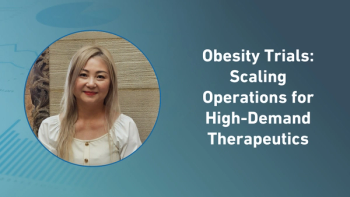
- Applied Clinical Trials-09-01-2010
- Volume 0
- Issue 0
Capturing Real World Data
There is increasing recognition of the need to understand product safety in the real world.
The conditions under which a drug is examined in building a case for approval are rarely the conditions under which it is actually used. Think about the extensive time and money spent to establish a drug's efficacy only to see its use being impacted by factors for which great pains were taken to control for or exclude altogether in clinical trials.
Not an uncommon situation: Consider the controlled environment of an automotive test track as compared to actual traffic conditions with other drivers, inclement weather, tricky roads, and kids screaming in the back seat. Of course, when it comes to human health, the stakes are much, much higher.
Jeffrey P. Trotter
There is increasing recognition of the need to understand product safety and its clinical, economic, and humanistic value in the real world. Enter observational or noninterventional research: studies that seek to determine a product's real world performance in the context of actual medical practice, ignoring (indeed, embracing) such standard exclusion criterion as patients with comorbid conditions and patients not adhering to treatment or visit schedules.
To seek real world findings, an observational study may require the involvement of community-based practitioners as opposed to traditional trialists. Indeed, these are but a few of the vexing realities of the real world that, to make sense of data from observational studies, suggest design and operational approaches far different than those that form the basis of Good Clinical Practice.
- The most recent findings from a series of industry surveys undertaken by PharmaNet over the past 18 months reveals much about the increased demand for but considerable unease and organizational dissonance associated with prospective observational research. Consider that:
- 85% of respondents reported some involvement with observational research
- Over 25 different terms were used synonymously with observational research
- Respondents varied widely in their expectations for the conclusiveness of findings from observational research
- 70% expect their involvement in observational research to increase
- 46% of respondents felt that observational research programs were a good value for their organizations, but insufficient budgets and poorly conceived strategy were reported as the two most troubling problems
- 44% of respondents felt that external regulatory/health authorities were not particularly comfortable with observational research, but that their understanding was improving.
The implications of the survey findings, while promising, reflect opportunities for improvement. While observational studies are increasingly being undertaken to answer the call for real world outcomes data, there remains considerable inconsistency in understanding, expectations, processes, and even terminology.
The few organizations that have employed observational research successfully are those that have approached design and implementation as requiring customized operational procedures and high degrees of collaboration, with both internal and external partners. These companies generally begin the process with a cross-functional and vertical consensus; often difficult to achieve, but essential both in leveraging varying perspectives and expertise, and in establishing common expectations. The most successful companies understand what they want to achieve with observational research and in many cases work backwards from that goal to construct the study.
Jeffrey P. Trotter Executive Vice President Phase 4 Development PharmaNet
Articles in this issue
over 15 years ago
Applied Clinical Trials Digital Edition - September 2010over 15 years ago
Applied Clinical Trials Digital Edition - September 2010, Supplementover 15 years ago
Applied Clinical Trials Digital Edition - September 2010, Supplementover 15 years ago
Geriatric Trials Spark Debateover 15 years ago
CRO act coverover 15 years ago
Business and News Update September 2010over 15 years ago
Transactional vs. Strategic Sourcingover 15 years ago
Direct-to-Patient Enrollment Strategiesover 15 years ago
Asia-Pac Grows With China Focusover 15 years ago
Ominous Clouds Over OutsourcingNewsletter
Stay current in clinical research with Applied Clinical Trials, providing expert insights, regulatory updates, and practical strategies for successful clinical trial design and execution.






.png)



.png)



.png)
.png)
